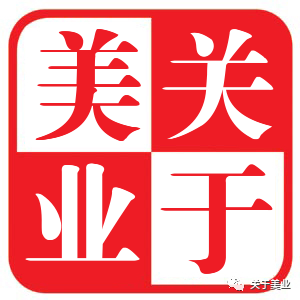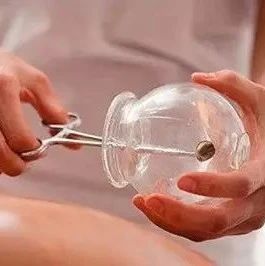About Health and Beauty Industry
A platform followed by tens of thousands in the health industry, sharing wellness knowledge, health tips, and beauty information; spreading positive energy, coexisting with health, and walking alongside beauty.
 About Beauty IndustryA dedicated platform for beauty professionals to exchange ideas on beauty and wellness.
About Beauty IndustryA dedicated platform for beauty professionals to exchange ideas on beauty and wellness.
Cupping therapy is one of the physical therapies in Traditional Chinese Medicine (TCM) and is a widely practiced home remedy in China. Many people choose to perform cupping at home, especially when they feel body aches and severe cold-dampness; applying a couple of cups can instantly make them feel revitalized. Although this cupping therapy can alleviate pain, it is not suitable for everyone, and we must not overlook certain contraindications and precautions!The cupping method uses cups as tools, employing fire or suction to remove air from the cups, creating negative pressure that adheres to acupuncture points (zhuyuan) or the areas to be treated, causing local skin congestion and bruising to achieve the purpose of disease prevention and treatment. There is a saying in folk medicine: “Needling and cupping, half the illness cured.” Cupping therapy is one of the traditional wellness methods in TCM.
1. Effects and Functions
The cupping method has effects such as promoting meridian circulation (tongjing huoluo), invigorating qi and blood (xingqi huoxue), reducing swelling and alleviating pain (xiaozhong zhizhong), and dispelling wind and cold (qufeng sanchan).
2. Who Should Not Use Cupping?
Patients with poor coagulation mechanisms, spontaneous bleeding tendencies, or persistent bleeding after injury should not use cupping therapy, such as those with hemophilia, purpura, or leukemia. Individuals with severe skin allergies or infectious skin diseases like scabies should avoid cupping. Patients with malignant skin tumors, local ulcerations, external injuries, varicose veins, or skin that has lost elasticity should not undergo cupping. Cupping should not be performed over large blood vessels. Pregnant women should avoid cupping on the abdomen, lower back, and breasts, and if cupping other areas, the technique should be gentle. Cupping is not recommended during the active phase of pulmonary tuberculosis or for women during menstruation. Patients with severe heart disease, heart failure, respiratory failure, or severe edema should not use cupping. Cupping is also contraindicated in facial areas, the anal region, and the apex of the heart. Individuals with severe neurosis, generalized convulsions, agitation, or those who are uncooperative should not undergo cupping.
3. Cupping Duration
The cups should not be left on for too long, generally controlled within 10 minutes. If the cups slide during treatment, the duration should be shorter to avoid blistering. If blisters occur, mild cases only require preventing rupture and allowing natural absorption; if blisters are large, they can be punctured with a sterile needle at the base to release fluid, then covered with a sterile dressing; if bleeding occurs, it should be wiped clean with a sterile cotton ball. The appearance of blisters is not always a bad sign; it can indicate that the body is experiencing issues.
Blisters, edema, and moisture during cupping are caused by excessive dampness or invasion of damp pathogens. Blisters that are blood-red or dark red, accompanied by body heat or heat toxins, indicate long-term dampness with blood stasis; purple-red or dark purple blisters without heat or rash indicate cold stagnation or blood stasis; blisters without skin color changes and are cool to the touch indicate deficiency-cold; mild itching or skin markings indicate wind syndrome.
4. Contraindications
- Individuals with bleeding tendencies, such as hemophilia, thrombocytopenic purpura, and leukemia, should not use cupping.
- Patients with generalized severe edema should avoid cupping.
- Individuals with severe skin allergies, damaged or ulcerated skin at the treatment site, or areas with external injuries, varicose veins, cancerous tumors, or skin that has lost elasticity should not undergo cupping.
- Cupping should not be performed on facial areas, the anal region, or over the apex of the heart. It is also contraindicated near large blood vessels, superficial arterial distributions, and scar tissue.
- Pregnant women should avoid cupping on the abdomen and lower back.
- Individuals with high fever and convulsions should not use cupping.
5. Precautions
- The cupping site or acupuncture points should generally be chosen on areas with ample muscle, sufficient subcutaneous tissue, and less hair. Excessive suction or prolonged duration can sometimes cause blistering of the skin.
- For first-time cupping or for individuals who are weak, anxious, elderly, or children who may have unexpected reactions, it is advisable to use smaller cups and limit the number of cups used, while lying down and being closely monitored for timely intervention.
- During cupping, movements should be steady, precise, gentle, and quick.
- Do not change body positions during cupping to avoid cup detachment. When using multiple cups, ensure they are not placed too close together to prevent skin pain from pulling or cups falling off due to mutual pressure.
- When using fire cups, care should be taken to avoid burns. If burns occur or if blisters form due to prolonged cupping, small blisters do not require treatment, just cover with sterile gauze to prevent rupture. For larger blisters, puncture to release fluid, apply gentian violet, or cover with sterile gauze to prevent infection.
- Cupping should be performed by a qualified practitioner. The technique used is called flash fire method, which involves soaking cotton balls in 95% alcohol before placing them in the cup. Improper handling can easily cause burns. Therefore, cupping should always be performed by a professional doctor or therapist.
Beauty Industry Wings
Technical exchanges, mutual assistance, online classes, discussions and learning, sales techniques, job recruitment, addressing difficult issues, networking among peers, and all services for beauty professionals.
Health and beauty is not just about sharing beauty
More importantly, it is about spreading health, helping others, and achieving oneself.
We will help those in need.
↓↓↓↓↓↓

